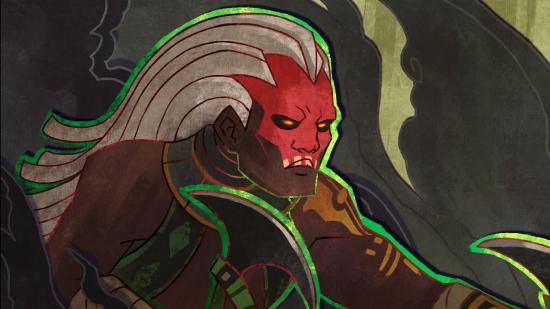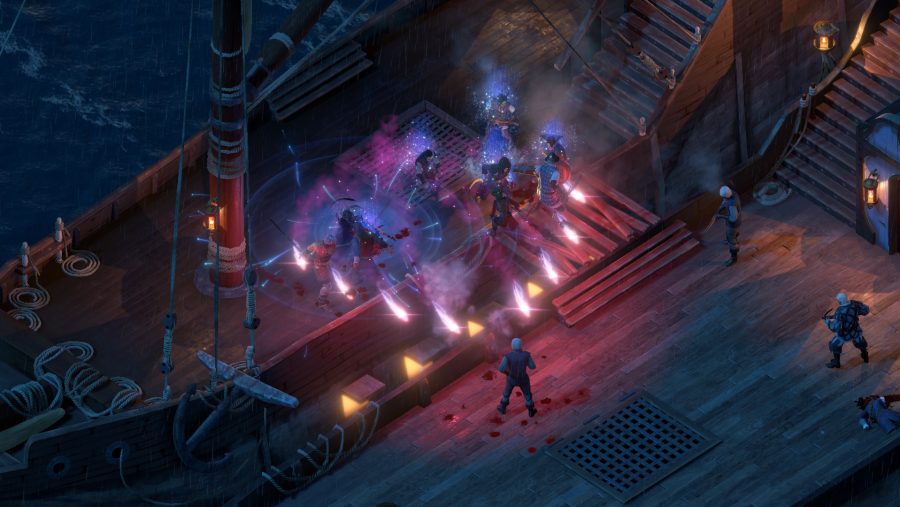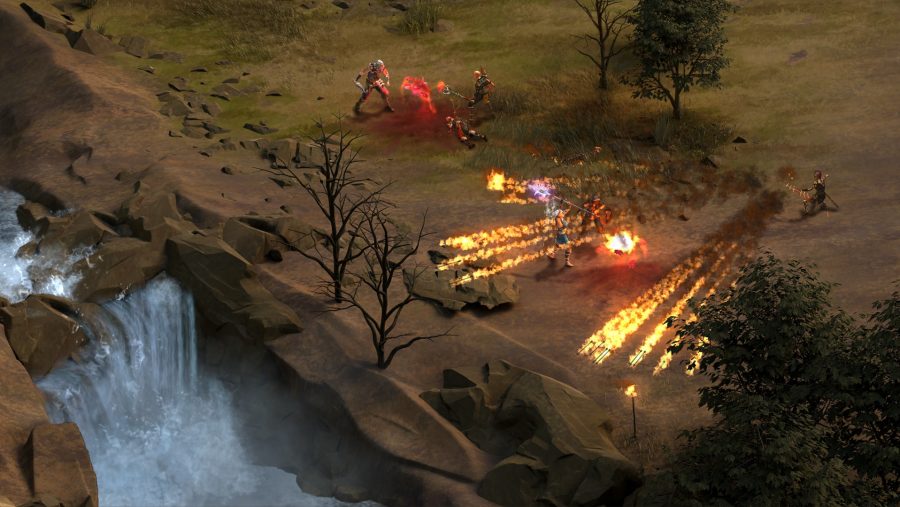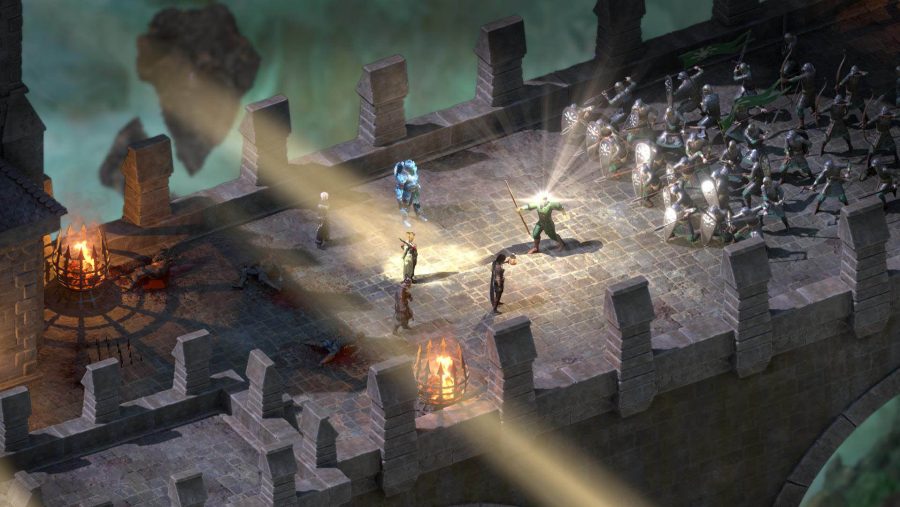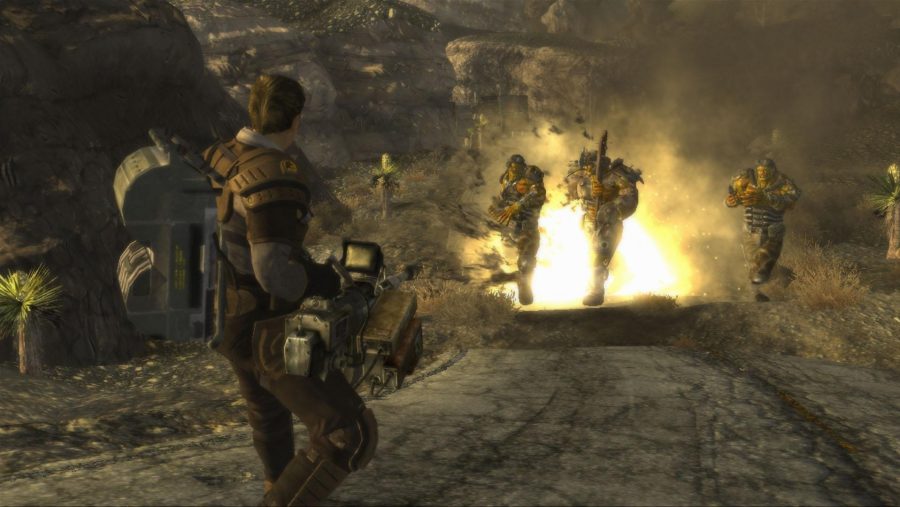What makes Obsidian the leading studio in the world for, well, worlds? The beloved RPG developer has built a reputation for creating distant lands so coherent and evocative you start to believe in them more than your own childhood memories.
Whether working with Star Wars, South Park, and Fallout, or inventing their own realms for Tyranny and Pillars of Eternity, Obsidian has excelled at taking us to other places.
It’s easy to imagine staff at the California studio working in service to a huge lore tome – a Silmarillion written specifically for that game, filled with the answer to every possible question, from the tread type of a goblin’s boot to the Voices of Nerat’s relationship with his mother.
Rather than continue to speculate, we decided to just ask them, digging into the process of PC gaming’s finest worldbuilders with narrative designer Alex Scokel. The picture that emerges is one of meticulous yet surprisingly malleable storytelling, as Obsidian often tears pages out of its game bibles – or scribbles notes in the margins.
Say you’re starting work on a new Obsidian game. When does worldbuilding begin?
Alex Scokel, designer: It depends on the project. Sometimes you have a specific goal you’re working towards, and worldbuilding is the answer to that goal. Sometimes you’re building an experience where the worldbuilding is very important to the basic systems of gameplay. It can be happening to an extent concurrently with the initial designs.
It can vary. Part of that involves how important the narrative is to the experience – and at Obsidian it’s often quite important. But it never really ends. The worldbuilding continues even after the game is locked down and out the door.
How early in production do you lock down the lore?
We often do a lot of preparatory work. For example, on Pillars of Eternity II: Deadfire, we were designing the culture of the Deadfire – the history and factions that exist in the area – before full production began. But all that stuff is pretty flexible until the game is out the door. You don’t want to paint yourself into a corner – things don’t necessarily work as well in-game as in theory.
When you talk about the design bible, you have the sense that it’s this immutable thing that every idea is in service to, and that’s not it at all. We actually have an internal wiki system, essentially. It’s very editable, and it’s served us well in terms of making sure we don’t get too married to ideas we haven’t already shipped. Once an idea is in the game and out in front of people it’s much more solid. It’s not something we want to edit because that would undermine the player experience.
How much does that process change between games?
One of the big things about Deadfire that sets it apart from the original Pillars is that it takes place in an island chain, so there’s a level of isolation to each of the spaces there. That pretty heavily informed the way we went about making these independent villages a bit more isolated. It allowed us to create their histories in a more of a vacuum. While they’re influenced by the various factions throughout the game, they aren’t all deeply interconnected within single nations, the way the original game is.
Has that helped narrative designers take greater ownership of the areas they’re responsible for?
Absolutely. It allows for more flexible storytelling, because you’re not as invested in making sure all the interconnected spaces flow together in a reasonable way, which would be the case on Tyranny, where the various regions impact each other significantly throughout the game. You had situations there where the area designers and narrative designers for each region had to be in constant contact.
That’s not the case in Deadfire – we had a bit more freedom to embrace spaces and not worry much about the way it impacts the things around it. I think that’s a strength and a weakness overall from a storytelling perspective, but it worked really well for Deadfire.
Tyranny’s world is fundamentally unfamiliar. Eora in Pillars started off familiar but has become more unusual as time’s gone on. What are the advantages and disadvantages of those two approaches?
The amount of worldbuilding done for Tyranny in pre-production was probably more significant than for Deadfire. We had big pieces of concept art, key art pieces, which displayed the feeling of the world. Pillars is this lush D&D fantasy, but not as many people on the team were familiar with some of the inspirations for Tyranny – things like Exalted, and this Greco-Roman, post-apocalyptic feeling.
We also had narrative rules we established that were contrary to your standard RPG. There was never going to be a ‘kill ten rats’ quest in Tyranny. From the very moment that the game began it was important that people recognise the player for who they were, and that the player had authority over a lot of the NPCs in that world. The QA team was informed to flag instances where people were talking down to the player and you weren’t given a chance to respond to them or put them in their place.
Do familiar fantasy worlds bring their own struggle? In that case you’re getting everyone to adhere to rules they might assume they already know.
[Laughs] There’s a consistent struggle in the Pillars team between making things that are pie in the sky weird and making things that fit the world. The goal is that the world keepers in the narrative department work together with the experience builders so that things make sense to the player. Sometimes they’re at loggerheads, where you have narrative saying, ‘This can’t happen, that’s not how it works’, but the area designers are saying, ‘We need to do this’.
Eora is a rules-based world, and it’s important to us to keep it internally consistent, because that gives weight to your actions. If a portal can open and orcs fall out then it undermines the player’s agency in the world. It undermines their decisions regarding various settlements and their communities, their own beliefs, and their companions.
What parts of the Pillars world do you consider to still be unexplored?
Tons of it. We’ve only really explored the Dyrwood and the Deadfire, and theoretically not even the entire Deadfire. I don’t see us making a Deadfire 2 anytime soon, but it’s a huge archipelago, which the game is only part of. We haven’t been to the eastern coast of the Eastern Reach. We haven’t been to the Vailian Republics. That’s why we bring cultures from those places into the space Deadfire takes place in – it’s why there’s a Vailian Trading Company office in Defiance Bay. Because we haven’t had a chance to explore those places.
Do you think your next stories are likely to be set in the Deadfire as DLC, or in a sequel set somewhere else entirely?
The DLC that is remaining is in the Deadfire, although it’s very influenced by other cultures. As for where we go next, that’s still an open question and source of debate within the team, but there are lots of people who have lots of desires about different things that they want to see, and places that intrigue us.
How different is it to worldbuild in a series you inherit?
It’s a complicated question, and it’s not just about the property that you’re working with. It’s a big part about who owns the property and what their investment in that is. For example, Paizo is very protective of Pathfinder. So when working on a Pathfinder property you have to meet their expectations and not diverge too far from what the players expect of a Pathfinder world.
Tyranny was the same way. Even though we created Tyranny, Paradox owns it, and so they had a level of investment about what that world was. There’s always a conversation about what you’re doing and making sure it fits within the boundaries and expectations that the owner has of that property.
Finally, for my news editor – what truth is there to those Microsoft buyout rumours?
Mikey Dowling, PR: Jeremy, you know what my response to that is, and it’s that you should totally listen to Fleetwood Mac’s Rumours album, because it’s still really, really good. Rumours are rumours.
